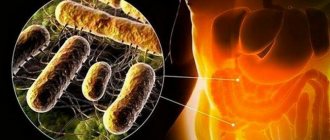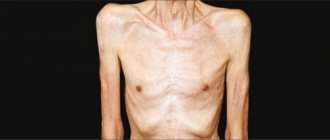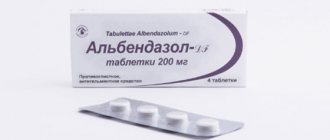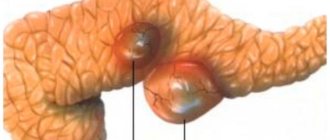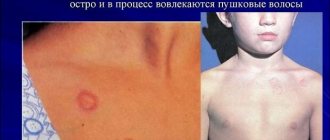Escherichia coli is considered one of the most common bacteria. Its habitat is the intestines of humans and some animals. It is believed that after entering the environment (the bacterium is excreted from the body along with feces), it can maintain its viability for a long period even under the influence of external factors.
Bacteria of the genus Escherichia coli can be both safe for the human body and pathogenic, capable of leading to the development of numerous diseases. These pathologies are characterized by their own pronounced symptoms. When they appear, a person must urgently contact a medical facility, otherwise the illness caused by the pathogen can lead to the development of serious complications that are life-threatening for the person.
Methods of infection
E. coli outbreaks are seasonal. Epidemics occur more often in the summer months. Main routes of infection:
- oral-fecal – after contact with water and soil contaminated with feces, as well as with vegetables that grew on it;
- contact-household - from a sick person through common objects (this method is less common than the first);
- from inflamed organs of the genitourinary system;
- transmission of escherichia coli from mother to child during childbirth.
The last method of transmission is the most dangerous, with a large number of complications. A newborn's immune system is weakened, so the body is unable to fight E. Coli. The bacterium multiplies rapidly and attacks the brain, causing meningitis.
The incubation period is 3-8 days.
In newborns, Escherichia coli is hemolytic and lactose-negative. An increase in the level of the first variety should cause concern among doctors. A lactose-negative bacillus must be present in the intestines, but its norm is 105. Exceeding normal values leads to the appearance of undigested food particles in the stool, as well as to alternating constipation and diarrhea.
The main source of E. coli infection is cattle. Along with the animal's feces, bacteria are released that enter the soil and water bodies. Meat that has undergone insufficient heat treatment, as well as unpasteurized milk, is a source of infection.
Predisposing factors for infection are failure to comply with personal hygiene rules, a decrease in the body's protective properties, an unfavorable epidemiological situation, and visiting countries with high levels of water and soil pollution.
Epidemiology
The source of infection is a sick person, a convalescent person or a bacteria carrier. The fecal-oral mechanism of transmission and spread of infection is realized in the following ways:
- The food route is carried out by consuming contaminated food products: milk, meat dishes, salads, insufficiently processed culinary dishes, hamburgers.
- The contact route is carried out through infected hands and household items. Persons who are in a closed group and do not follow the rules of personal hygiene are most susceptible to infection.
- Waterborne – the infection spreads by drinking drinking water contaminated with sewage or using it to irrigate crops.
Susceptibility to acute intestinal infection caused by Escherichia is determined by a person’s age, the state of the immune system, the pathogenicity of the pathogen, its biochemical properties and the effect on the epithelium of the gastrointestinal tract. Children under the age of one year, persons weakened by chronic diseases and the elderly are most susceptible to various infectious processes.
Types
All coliform bacteria (coliforms) can be divided into opportunistic and pathogenic. There are more than 100 strains of the latter. They are the ones who cause intestinal infections. Among the main types of E. coli are:
- Enteroinvasive. The symptoms of infection are similar to dysentery.
- Enteropathogenic. More often they colonize the small intestine of infants.
- Enterotoxigenic. They cause stomach diseases, the symptoms of which disappear within 3-5 days without drug treatment.
- Enterohemorrhagic. Accompanied by the development of colitis and uremic syndrome, leading to a rapid deterioration in health.
All pathogenic E. coli can cause infectious diseases (escherichiosis). All E. Coli can survive for a long time in the external environment - in feces, water and soil. The bacterium is killed by certain chemical compounds, as well as exposure to temperatures above 70˚C.
Symptoms
General deterioration of health and digestive disorders are the main symptoms of E. coli. Intestinal infection can occur as enterocolitis, food poisoning, dysentery or cholera-like infection, hemorrhagic colitis. Symptoms depend on the type of microorganism, so each class needs to be studied in more detail.
Enteropathogenic symptoms of Escherichia coli
This pathogen causes nausea, vomiting, stomach pain, severe diarrhea and high body temperature. The stool is copious and watery. This form of escherichiosis is most often diagnosed in children under one year of age.
Read more about diarrhea in children on the website Mama66.ru.
Enterotoxigenic symptoms of Escherichia coli
Escherichiosis is most often caused by dirty hands, as well as unwashed vegetables and fruits. E. coli is firmly attached to the intestinal mucosa, so the symptoms are pronounced.
Signs:
- copious watery stools;
- paroxysmal abdominal pain;
- nausea and vomiting;
- weakness;
- muscle and joint pain;
- increase in body temperature.
Manifestations of this group of bacteria, Escherichia coli, are often called “traveler's diarrhea.”
Enterohemorrhagic symptoms of Escherichia coli
Bacteria of this group, E. coli, lead to the most severe consequences. Hemolytic E. Coli causes acute hemolytic anemia as blood cells are destroyed. This can lead to the death of the patient, so it is important to recognize the infection in time.
Symptoms:
- bloody diarrhea;
- nausea, vomiting;
- lack of appetite;
- weakness;
- headache;
- fever, high body temperature;
- stomach ache.
In children, bacteria of this group of E. coli have characteristics - bloating, liquid feces with mucus and particles of undigested food, regurgitation, vomiting, increased body temperature, tearfulness and restlessness.
This type of escherichia coli occurs in children, the elderly, and women after childbirth.
Symptoms always appear suddenly and acutely. In addition to the destruction of blood cells, damage occurs to the renal tubules and glomeruli. Ischemia of the vessels of the renal glomeruli develops, and then acute renal failure. As a result of toxic effects, hemolytic jaundice appears, the skin acquires a lemon-yellow tint.
Enteroinvasive symptoms of E. coli
This group of bacteria, Escherichia coli, is more common in children, causing the following symptoms:
- loose stool mixed with blood;
- lower abdominal pain;
- weakness;
- refusal to eat;
- headache;
- increase in body temperature.
Symptoms of pathology
When pathology appears, weakness is felt.
Before you can treat E. coli, you need to identify its symptoms.
When pathology appears in patients, corresponding symptoms are observed, with the help of which he can independently determine the disease.
Despite this, to confirm the diagnosis, the patient must seek help from a doctor.
He not only prescribes appropriate tests, but also makes a diagnosis based on symptoms. In most cases, the appearance of E. coli in patients is accompanied by:
- Weakness;
- Hyperemia;
- Fever;
- Nausea;
- Vomiting.
Read: How to choose a good laxative?
Also, during the development of the pathological process, patients' appetite is disturbed. Many patients complain of vomiting, which is green in color.
Also, the pathological condition is accompanied by indigestion, which is manifested by severe diarrhea. Patients claim that when E. coli appears, they experience a nagging pain.
Since when E. coli appears, the human intestines clear spontaneously, this leads to the fact that after a few days the symptoms go away. When E. coli appears in adult patients, emergency medical intervention is not required.
If there is a suspicion of the development of coli infection in children, then they must urgently receive qualified assistance. This is explained by the deadly danger of E. coli.
The symptoms of the pathological condition are quite developed. That is why, when the first signs of E. coli appear, the patient is recommended to make an appointment with a doctor, who, after conducting the appropriate diagnosis, will prescribe rational treatment for the patient.
Escherichia coli and the genitourinary system
E. coli, entering the organs of the urinary or reproductive system, leads to diseases of these organs. Common diseases caused by E. Coli:
- cystitis;
- pyelonephritis;
- urethritis, prostatitis, epididymitis and orchitis in men;
- adnexitis, vulvovaginitis, endometritis, colpitis in women;
- peritonitis.
Escherichia coli penetrates from the rectum into the urethra and bladder in an ascending manner. There are suggestions that the bacillus is transmitted sexually from an infected partner.
Infectious diseases caused by E. coli are difficult to treat. The bacterium weakens local immunity, which makes there a high probability of infection with gonococci, staphylococci and other dangerous microorganisms. Chlamydia or gonorrhea may develop.
Along with genitourinary diseases, complications from the digestive tract are possible, for example, pyelonephritis is often accompanied by acute pancreatitis.
Consequences
Escherichia coli can cause disease in organs other than the intestines. In the urinary tract, this bacterium can also cause inflammation. In girls and women, this risk is higher than in men, because... they have a short path from the intestine to the urethra.
In addition, the bacterium is often the culprit of respiratory infections, the cause of neonatal meningitis (inflammation of the brain), etc. These conditions apply mainly to weak and long-term bedridden people.
Treatment for intestinal infections often consists only of fluid replenishment, diet, and supplementation of appropriate bacteria that prevent E. coli from multiplying. Antibiotics have been found to increase the secretion of toxin from bacteria, so it can sometimes be difficult to decide on a specific treatment option. In case of inflammation of other organs and tissues, treatment always involves the use of antibiotic drugs.
E. coli normal
Escherichia coli is a microscopic bacterium. Its characteristics:
- gram-negative microorganism;
- size only 2x0.6 microns;
- sustainable in the environment;
- optimal pH 7.2-7.4;
- suitable temperature is 37˚C.
Non-pathogenic strains are part of the microflora of a healthy person. Normally, their number varies from 106 to 108 CFU/g. They populate the intestines in the first days of a baby’s birth.
If the normal number of microorganisms is exceeded, then E. Coli. have a toxic effect, so treatment is necessary.
Characteristics of the microorganism
Escherichia coli belongs to the Enterobacteriaceae family, which also includes Klebsiella and a number of other microorganisms. Unlike many of its relatives, E. coli does not form spores and grows well on nutrient media, which allows bacteriologists to easily isolate it from human feces and study it in every possible way. High temperatures and disinfectant solutions have a detrimental effect on the microorganism in question.
Most non-pathogenic Escherichia coli synthesize enzymes that decompose lactose, which is why they are called lactose-positive. If this property is not detected, E. coli are considered to be lactose-negative.
Hemolyzing (hemolytic) Escherichia coli - what is it? Some E. Coli, in addition to enzymes, produce hemolysins (substances that destroy blood). On nutrient media containing erythrocytes, such bacteria form colonies, around which zones of hemolysis gradually appear.
Analyzes
The basis of the examination for diagnosis is laboratory diagnosis of escherichiosis. It assumes:
- blood analysis;
- urine and stool analysis;
- coprogram, feces for dysbacteriosis;
- vaginal and urethral smear;
- analysis of vomit;
- urine test for acetone.
As a result of the data obtained during the examination, one can judge the state of the intestinal microflora, the severity of intoxication of the body, as well as determine the type and class of bacteria, their resistance to antibiotics.
If Escherichia coli is detected in the blood, this indicates a serious condition that can be fatal. Such patients are subject to urgent hospitalization.
Treatment
It is unacceptable to treat E. coli on your own. The symptoms of escherichiosis are similar to other infectious diseases, so it is impossible to select adequate therapy at home. All medications are prescribed only after the results of bacterial culture. Treatment of E. coli is possible only with the help of antibacterial drugs.
Basic medical measures for escherichia coli:
- hospitalization (for young children and patients with dehydration);
- bed rest;
- drug therapy (antibiotics, probiotics, detoxification agents, rehydration);
- dietary nutrition (diet No. 4 for intestinal damage and table No. 7 for diseases of the kidneys and genitourinary system).
Drug therapy is primarily aimed at preventing dehydration of the body, maintaining vital functions and preventing complications from the gastrointestinal tract and genitourinary system.
Treatment of escherichiosis with medications looks like this:
- cephalosporin and fluoroquinolone antibiotics - Levofloxacin, Moxifloxacin, Cefaprim, Cefazolin, Cefepime;
- bacteriophages (preparations containing viruses that kill E. coli) – Liquid coli;
- probiotics (required for dysbacteriosis) – Hilak forte, Linex, Acipol, Enterol;
- enterosorbents (to relieve symptoms of intoxication) – Smecta, Enterosgel, Polysorb;
- rehydration solutions (for the prevention of dehydration caused by vomiting and diarrhea) – Trisol, Regidron;
- antipyretic drugs (at temperatures above 38 ° C) - Paracetamol, Panadol, Ibuprofen.
Bacteriophages have a pronounced therapeutic effect. They kill the pathogen escherichia coli, so recovery occurs faster than with antibacterial therapy.
If E. coli leads to the development of complications in the form of meningitis, pyelonephritis, cholecystitis or sepsis, then antibiotics of the cephalosporin group, for example, Cefuroxime, are necessarily used.
Severe dehydration, which is accompanied by electrolyte disturbances, is treated with infusion solutions.
Antibacterial treatment lasts 5-7 days. After recovery, the patient should take probiotics, for example, Bifidumbacterin, for 2-3 weeks, and also follow a diet.
Treatment of the disease
Cephalexin - treats infectious diseases.
For the treatment of E. coli, antibiotic therapy is used in most cases.
Initially, bacteriological culture is recommended to determine sensitivity to antibiotics.
Next, a specific traditional medicine is selected to which E. coli is sensitive.
The course of patient treatment using pharmaceutical medications ranges from 3 to 14 days.
After completing the course of treatment, you must wait 2 months.
Next, bacteriological culture is again carried out to determine E. coli. Its absence indicates the success of therapy.
Read: How to take Maalox, description, dosage, indications
If a bacterium is detected, patients are prescribed a second course of treatment using other antibiotics. To treat infectious processes in the genitourinary system, pharmaceutical drugs are most often used in the form of:
- Cephalexin;
- Amikacin;
- Cefotaxime;
- Imipenema;
- Levofloxacin, etc.
During the period of antibiotic therapy, adult patients and children must follow the same rules. Treatment of children less than a year old is carried out in a hospital setting. All other patients can undergo therapy at home.
If a patient has been diagnosed with an intestinal infection, then he must be on a gentle diet. During this period, it is recommended to eat porridge. Which are cooked in water, slimy soups, as well as stale white bread.
The patient is also recommended bagels, boiled meat or low-fat fish, boiled vegetables, and crackers. The patient is strictly prohibited from consuming smoked, fatty and fried foods.
Also, doctors do not recommend the use of spices, canned food, salty and pickled foods. Fresh fruits, milk, fatty fish and meat, and rich soups are excluded from the patient’s menu.
Antibiotic therapy and diet are highly effective only if the medications and menu for the patient are selected correctly.
Prevention
All preventive measures for Escherichia coli boil down to the following recommendations:
- observe the rules of personal hygiene;
- wash vegetables and fruits thoroughly;
- follow the rules of heat treatment of meat;
- do not drink raw milk;
- purchase meat and dairy products only from trusted sellers with a quality certificate for the product;
- strengthen immunity;
- regularly carry out wet cleaning in the house.
At the first symptoms of E. coli, you should immediately visit a doctor. After recovery, you need to see a doctor on days 6-8 to rule out a relapse.
Intestinal infection is common among adults and children. It is not only accompanied by severe symptoms, but can also lead to severe dehydration, disruption of important body functions, and death of the patient. It is important to follow preventive measures and treat E. coli at the first manifestations.
